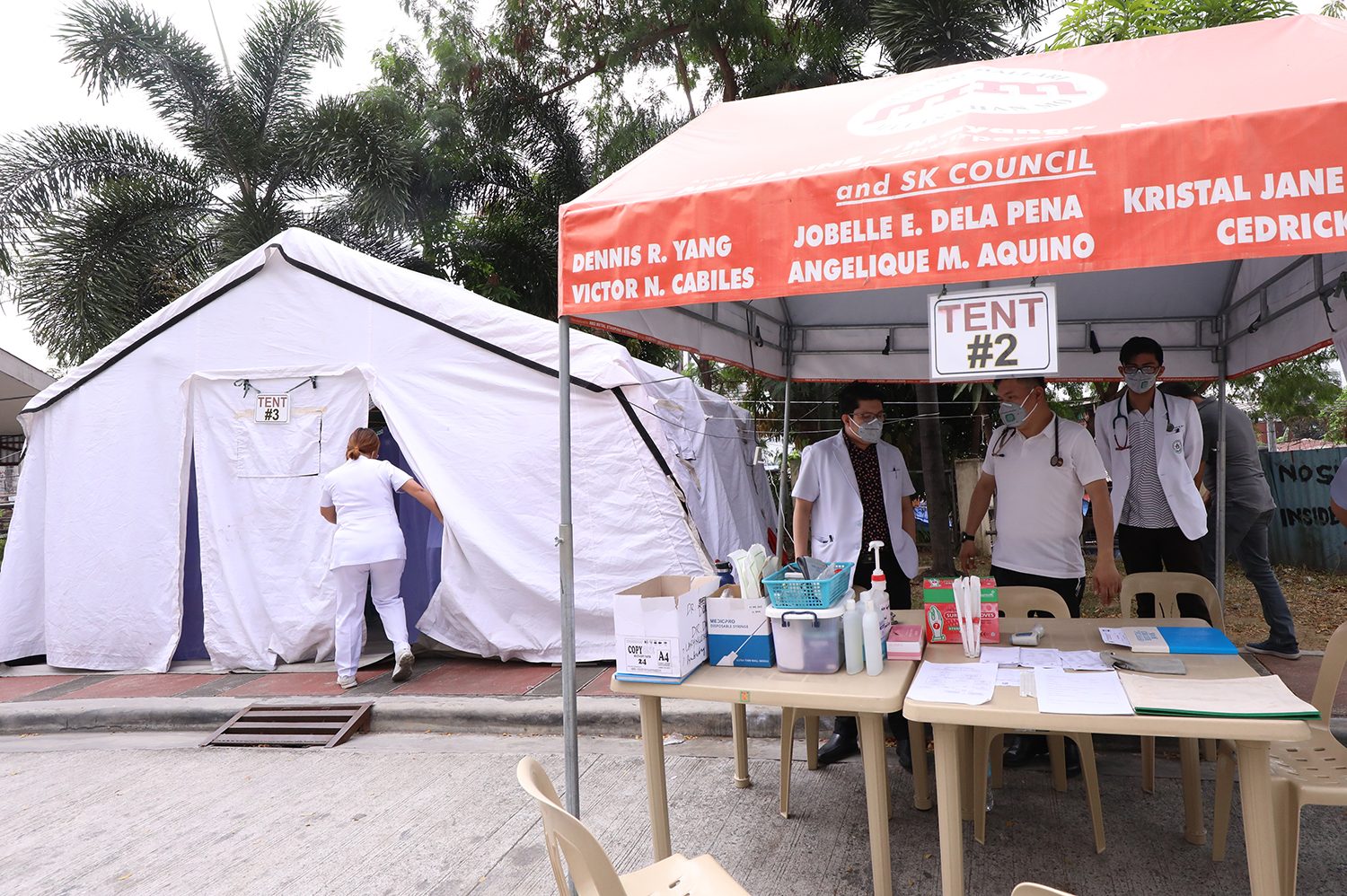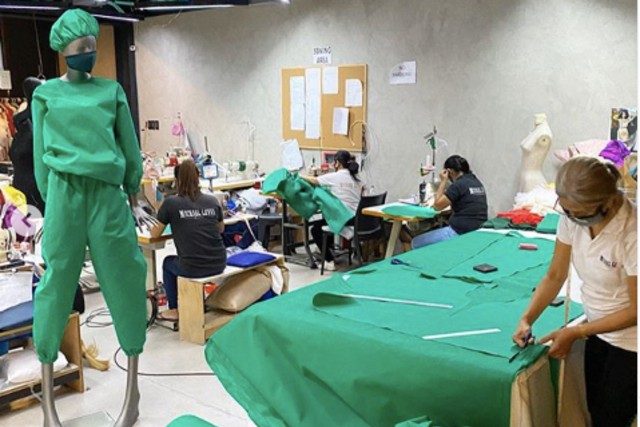SUMMARY
This is AI generated summarization, which may have errors. For context, always refer to the full article.

This compilation was migrated from our archives
Visit the archived version to read the full article.
(This newsletter was emailed to Rappler subscribers on March 28, 2020.)
There have been 9 of them – at least those whom hospitals, associations, and relatives have announced – and we face each day fervently hoping, praying, the list won’t get longer.
I’m talking about the Filipino doctors who died from the coronavirus disease, getting infected by the virus while attending to patients. Among them are cardiologists Israel Bactol and Raul Diaz Jara and anesthesiologist Greg Macasaet.
Stretched over unusually long hours of duty, either without enough protective gear and supplies or compromised by patients who didn’t disclose they were carrying the virus, they died serving – and fighting. Even a doctor not actively treating the sick but working to ensure communities are healthy and protected – Pampanga provincial health chief Marcelo Jaochico – wasn’t spared. (READ: LEFT IN THE DARK: Little protection for government’s coronavirus frontliners)
Doctors aren’t the only warriors. Nurses and allied medical workers, even the janitors who scrub the walls and floors to disinfect them at the end of each shift – in government-run specialized hospitals, in modern medical centers, in private clinics and rural health clinics across the country – are on the front lines.
Here’s how short-handed the Philippines is in this battle: as of 2016, the Philippine Medical Association said only about half of the country’s licensed doctors – 70,000 out of 130,000 – were in active practice. Then-health secretary Paulyn Ubial said 15,000 more doctors were needed if citizens’ health needs were to be adequately met.
At the time, while the World Health Organization said the standard ratio for public health was 1 doctor for every 20,000 population, the Philippines had 1 doctor for 33,000 population. We couldn’t catch up, because we had only been producing around 3,000 doctors each year before that. As of 2018, in this country that’s home to more than 110 million people, there were only 14,107 physicians in the public service sector.
Multiply that shortage among nurses, therapists, technologists, and support staff without whom the doctors and health facilities would be crippled.
Yet they soldier on. Amid the current pandemic, they battle fear, choose to make sacrifices, and confront the virus.
NEGLECTED, DISCRIMINATED
And what do they get in return?
The government’s protocols don’t prioritize them in tests. They are deprived peace of mind, not only because their health is at risk but because they worry about unknowingly carrying the virus and exposing their non-COVID patients to risks.
The Department of Health acknowledges them as “health care warriors” yet insult them with an offer of minimum wage salary – P500 a day – if they’d “volunteer” for the epidemic response. This, while countries where the outbreak appears worse, like Germany, present a tempting proposition to compensate our medical workers better.
They get fined half of their monthly salary at the checkpoint for not having other transportation option after long hours of duty, while a COVID-positive senator, who knowingly breaks his quarantine to buy groceries and accompany his wife to a hospital, is treated with “compassion” by the justice department, and not castigated by the presidential palace.
They try to raise funds so they can buy the protective equipment that the government cannot provide for them – as what these doctors in Bicol did. But the government also warns them about soliciting for these gear that would shield them from the virus because it’s considered a corrupt act, as what happened to doctors in Negros Occidental.
So the medical frontliners resort to improvising their personal protective equipment (PPE), even as we follow the tweets of our foreign affairs secretary about the customs bureau allegedly holding up the supplies meant for the Philippine General Hospital.
They are discriminated against in public places, like eateries, and even evicted by their landlords – such as what happened in Iloilo City – because people see them as virus carriers.
And as if their hands aren’t already full, they are also battling online misinformation about the novel coronavirus.
WE COME TO THEIR AID

But those who know better in government and in the private sector, in offices, homes, and communities, are coming to the aid of our frontliners.
Vice President Leni Robredo’s office – among the national government offices with the lowest annual budgets – has raised P5.3 million for the extraction kits needed by the DOH’s Research Institute for Tropical Medicine, P12.3M for health workers’ protective gear, opened a free dormitory for health workers who cannot travel to and from home, and provided free shuttle service for health workers.
Fashion designers sew masks and PPE sets for the frontliners, while celebrities (like Angel Locsin) and athletes (like Jia Morado) raise money to acquire more of the supplies the medical workers need.
Some local governments, like Mayor Jerry Treñas and the Iloilo City council, proactively address concerns, such as when they amended their anti-discrimination ordinance to deal with the problems of the discriminated and evicted health workers.
Students have taken action. Those in Xavier University have produced alcohol to shield health workers from the virus. Philippine Science High School campuses across the country are producing 3D-printed face shields for them. The Cordillera youth are making masks amid the shortage. Those in Cagayan de Oro and Iloilo are doing the same. Students and various groups are providing transportation for the health workers. Shops offer free coffee and food to the weary health workers.
Big business is going the extra mile as well. The SM Group is allocating P100 million for protective equipment, surgical masks, and ethyl alcohol for hospitals. Coca-Cola realigns P150 million in commercial advertising budget to purchasing PPE, food, and beverage for them. Ligo Sardines reallocates its advertising budget to donations to nongovernmental organizations and other independent groups doing relief and response work.
The millennials record tribute videos to hail medical frontliners as their heroes.
And, finally, a National Artist for Literature immortalizes in a poem the good fight fought by these warriors. – Rappler.com
Bookmark this special page to follow Rappler’s running coverage: NOVEL CORONAVIRUS OUTBREAK: News, Advisories, Explainers
Subscribe to our Coronavirus Updates newsletter here.
Add a comment
How does this make you feel?
There are no comments yet. Add your comment to start the conversation.